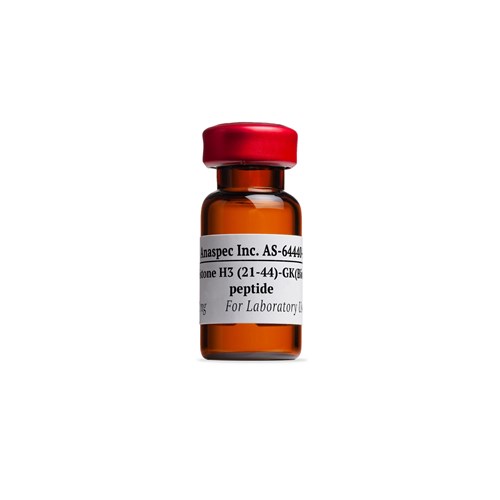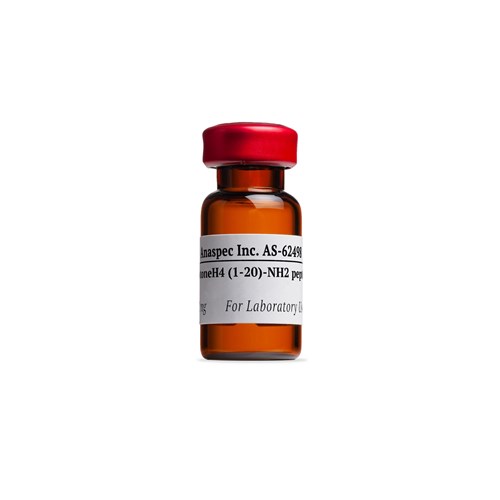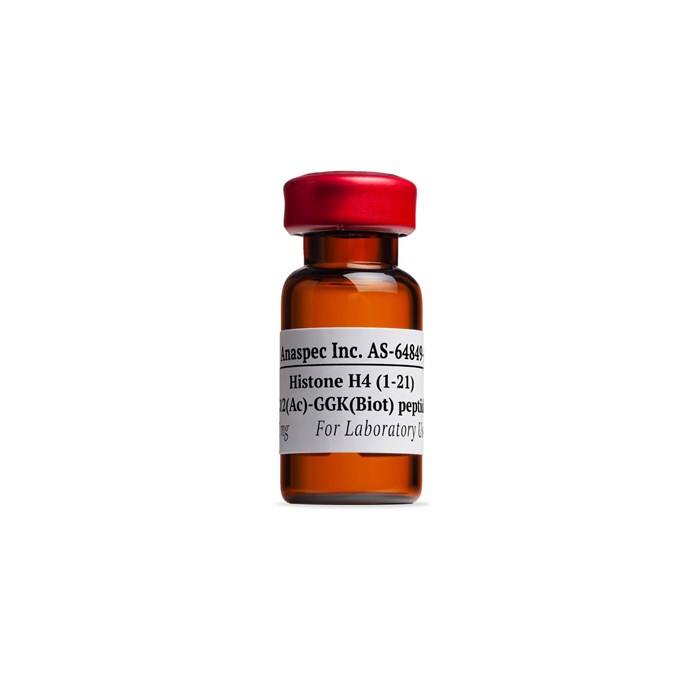We use cookies to offer you the best experience on our site. You can find out more about the cookies we use or disable them in the Cookie settings
[Lys(Ac)12]-Histone H4 (1-21)-GGK(Biotin) - 1 mg
- Cat.Number : AS-64849-1
- Manufacturer Ref. :
-
Availability :
In production
Alternative choices
This peptide is histone H4 (1-21), acetylated at lysine 12. The N-terminus contains a C-terminus GG linker followed by a biotinylated lysine. The acetylation of histone H4 plays a crucial role in structural changes that amplifies the binding of transcription factors to their recognition sites within the nucleosomes. Provided at >95% peptide purity, this peptide was dissolved in distilled water at 1 mg/ml and re-lyophilized to powder form.
Specifications
| Chemistry | |
| Sequence one letter code |
|
|---|---|
| Sequence three letter code |
|
| Molecular Mass/ Weight |
|
| Modification | |
| Conjugation type |
|
| Modification Name | |
| Conjugation |
|
| Quantity & Purity | |
| Purity |
|
| Storage & stability | |
| Form |
|
| Activity | |
| Biomarker Target | |
| Research Area | |
| Sub-category Research Area | |
| Usage |
|
| Source | |
| Source / Species |
|
| Codes | |
| Code Nacres |
|
You may also be interested in the following product(s)



Citations
Selective recognition of H3.1K36 dimethylation/H4K16 acetylation facilitates the regulation of all-trans-retinoic acid (ATRA)-responsive genes by putative chromatin reader ZMYND8
J. Biol. Chem. . 2015 Dec 11 ; 291(6) 2664 | DOI : 10.1074/jbc.M115.679985
- S. Adhikary
- et al
Binding of the histone chaperone ASF1 to the CBP bromodomain promotes histone acetylation.
PNAS . 2014 Mar 10 ; 111(12) E1072 | DOI : 10.1073/pnas.1319122111
- C. Das
- et al
